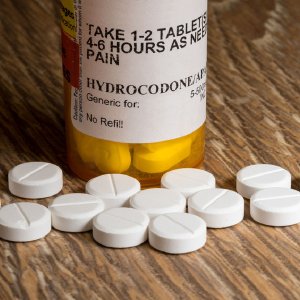DEA Intervenes to Reduce Number of Painkillers in Circulation

In early October 2016, the Drug Enforcement Administration released an order to pharmaceutical manufacturers to reduce the number of controlled prescription drugs that could be made in 2017. Prescription drugs are considered “controlled” when they are likely to be abused or have the potential to cause addiction.
The pills affected by this order include the following and more:
Stimulants:
- Cocaine
- Amphetamine
- Ecgonine, a drug that can be made into cocaine
- Methylfenidate (may be brand named Ritalin)
- Ephedrine, can be made into methamphetamine
Opioid (synthetic) painkillers:
- Oxycodone
- Hydrocodone
- Morphine
- Hydromorphone
- Meperidine
- Oripavine, a drug that is made into several painkillers
- Fentanyl
- Sufentanil, similar to fentanyl
- Codeine
- Plus non-synthetic opium tincture
Other:
- Marijuana
- Nabilone, a synthetic cannabinoid
- LSD
Production was ordered reduced by 25% to 34%, depending on the drug. The DEA stated that that the quantities of these drugs being manufactured exceeded the quantity needed for treatment, research, industrial needs and export. The order that sets these limits on production is called the Aggregate Production Quote or APQ.

Will We Run Out of Painkillers?
It’s not likely. The U.S. already consumes 80% of the world’s painkillers and 99% of the world’s hydrocodone. Just at a glance, it hardly seems possible that the U.S. could need this much strong pain relief.
Purpose of the Order
The purpose of this reduction is to eliminate some of the excess pills in circulation. Surveys and research show that people starting to abuse prescription drugs usually get these pills from leftovers possessed by friends or family. Because not all doctors have modified their prescribing practices as requested earlier in 2016 by the Centers for Disease Control and Prevention, there are still too many pills being sent home with patients. The pills sit in medicine cabinets and bedside tables until someone realizes that those pills either could be “fun” to abuse (or so they have heard) or they could take away some anguish the person is experiencing.
These two agencies are cooperatively taking action to help reduce the number of these pills being abused. Medical establishments like Harvard Medical School are just beginning to make changes to ensure that doctors have better training to prevent their inadvertently causing addiction. With all these organizations working together, it’s possible to reduce the number of pills being abused and leave untouched the number needed to treat severe temporary or chronic pain.
Period of Adjustment Could be Difficult
Unfortunately, when similar adjustments have happened in the past, some people suffering from terrible chronic pain have found it hard to get medication they needed to make life tolerable. Some of their doctors worried about being investigated or prosecuted for giving patients high dosages of painkillers. In a well-run system where the doctors have the right training to prevent addiction and prosecutors never choose a wrong target, this would never happen. We may not yet have that well-run system and some people in pain may suffer as a result.
Any cases where this does occur will not be attributable to this limitation of manufacture. In fact, the DEA notes in their announcement: “Much of this reduction is attributed to the elimination of a 25 percent buffer that was added to the APQ annually in 2013 through 2016 to guard against shortages.” Thus this order only reduces manufacture for many of these drugs to the amounts that were actually needed in these earlier years. It is therefore unlikely that we will run out of any of these drugs.
Preventing Addiction and Overdoses
There are many, many changes that need to take place to eliminate the appalling number of overdose deaths and people needing recovery from addiction. Those changes need to occur at every level, from living rooms to schools, from hospitals to jails and courtrooms and from Congress to local police stations. Nationally, we are losing more than 47,000 people a year to drug overdoses, more than half of these to prescription drugs.
At Narconon Arrowhead, we are very proud to have spent more than two decades helping the addicted break free of their chains and establish sober, productive lives for themselves.
If you care about someone who has lost their way, contact us. We can help.
Call 1-800-468-6933 today
REFERENCES
https://www.dea.gov/divisions/hq/2016/hq100416.shtml
http://www.cdc.gov/drugoverdose/prescribing/guideline.html
https://www.drugabuse.gov/related-topics/trends-statistics/overdose-death-rates


